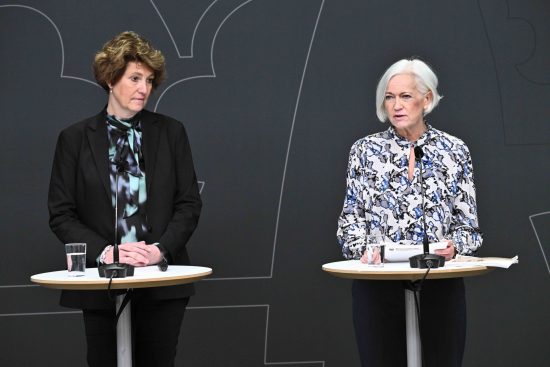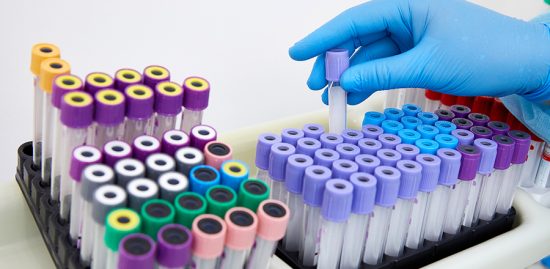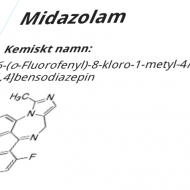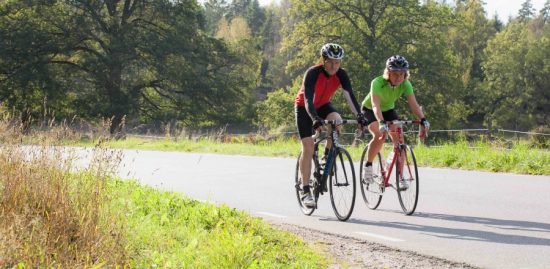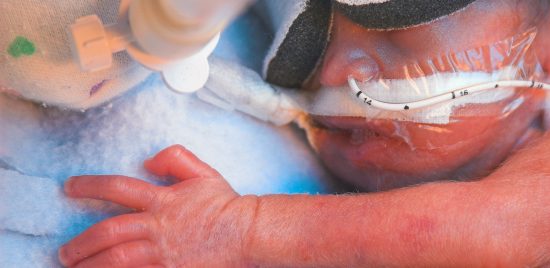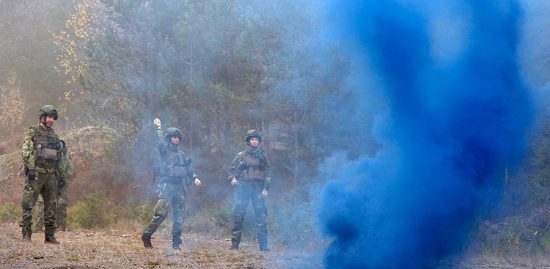1.Soop M, Fryksmark U, Köster M, Haglund B. Vårdskador på sjukhus är vanliga. Majoriteten går att undvika, visar journalstudie. Läkartidningen 2008;105:1748-52.2.CIN Consensus Working Panel. Contrast-Induced Nephropathy: Clinical insights and practical guidance. Am J Cardiol 2006;98(Suppl 1):1K-78K.3.The Consensus Panel for CIN. Contrast-induced nephropathy. Kid Internat 2006;69(Suppl100):S1-S53.4.Barrett BJ, Carlisle EJ. Metaanalysis of the relative nephrotoxicity of high- and low-osmolality iodinated contrast media. Radiology 1993;188:171-8.5.Rudnick MR, Goldfarb S, Wexler L, Ludbrook PA, Murphy MJ, Halpern EF, et al. Nephrotoxicity of ionic and nonionic contrast media in 1196 patients: a randomized trial. The Iohexol Cooperative Study. Kidney Int 1995;47:254-61.6.European Society of Urogenital Radiology. ESUR guidelines on contrast media. http://www.esur.org/fileadmin/Guidelines/ESUR_2007_Guideline_6_Kern_Ubersicht.pdf (Accessed September, 2008), 2007.7.Nash K, Hafeez A, Hou S. Hospital-acquired renal insufficiency. Am J Kidney Dis 2002;39:930-6.8.McCullough PA, Adam A, Becker CR, Davidson C, Lameire N, Stacul F, et al. Epidemiology and prognostic implications of contrast-induced nephropathy. Am J Cardiol 2006;98:5K-13K.9.Mehran R, Nikolsky E. Contrast-induced nephropathy: definition, epidemiology, and patients at risk. Kidney Int Suppl 2006;69:S11-5.10.McCullough PA, Wolyn R, Rocher LL, Levin RN, O’Neill WW. Acute renal failure after coronary intervention: incidence, risk factors, and relationship to mortality. Am J Med 1997;103:368-75.11.Nyman U, Almen T, Aspelin P, Hellström M, Kristiansson M, Sterner G. Contrast-medium-Induced nephropathy correlated to the ratio between dose in gram iodine and estimated GFR in ml/min. Acta Radiol 2005;46:830-42.12.Polena S, Yang S, Alam R, Gricius J, Gupta JR, Badalova N, et al. Nephropathy in critically Ill patients without preexisting renal disease. Proc West Pharmacol Soc 2005;48:134-5.13.Davidson C, Stacul F, McCullough PA, Tumlin J, Adam A, Lameire N, et al. Contrast medium use. Am J Cardiol 2006;98:42K-58K.14.Katzberg RW, Barrett BJ. Risk of iodinated contrast material–induced nephropathy with intravenous administration. Radiology 2007;243:622-8.15.Bassignani M, Choudhri A, Duong P, Post A, Harrison J. Comparison between estimated glomerular filtration rate and serum creatinine as a screening tool prior to administration of iodinated contrast material for computed tomography. Radiological Society of North America Annual Meeting November 25-30 2007:627.16.Alwall N, Johnsson S, Tornberg A, Werko L. Acute renal failure following angiography especially the risk of repeated examination, revealed by eight cases (two deaths). Acta Chir Scand 1955;109:11-9.17.Heyman SN, Reichman J, Brezis M. Pathophysiology of radiocontrast nephropathy: a role for medullary hypoxia. Invest Radiol 1999;34:685-91.18.Morcos SK. Contrastmedium-induced nephrotoxicity. In: Dawson P, Cosgrove DO, Grainger RG, eds. Textbook of Contrast Media. Oxford: Isis Medical Media, 1999; 135-48.19.Nationella rekommendationer för kontrastmedelsanvändning. http://www.sfmr.se/sok/riktlinjer.htm (Accessed September 14, 2008) 2008.20.Manjunath G, Tighiouart H, Ibrahim H, MacLeod B, Salem DN, Griffith JL, et al. Level of kidney function as a risk factor for atherosclerotic cardiovascular outcomes in the community. J Am Coll Cardiol 2003;41:47-55.21.Levy EM, Viscoli CM, Horwitz RI. The effect of acute renal failure on mortality. A cohort analysis. JAMA 1996;275:1489-94.22.Duncan L, Heathcote J, Djurdjev O, Levin A. Screening for renal disease using serum creatinine: who are we missing? Nephrol Dial Transplant 2001;16:1042-6.23.Stevens LA, Coresh J, Greene T, Levey AS. Assessing kidney function–measured and estimated glomerular filtration rate. N Engl J Med 2006;354:2473-83.24.Nyman U, Björk J, Sterner G, Bäck SE, Carlson J, Lindström V, et al. Standardization of p-creatinine assays and use of lean body mass allow improved prediction of calculated glomerular filtration rate in adults: a new equation. Scand J Clin Lab Invest 2006;66:451-68.25.Grubb A, Nyman U, Bjork J, Lindstrom V, Rippe B, Sterner G, et al. Simple cystatin C-based prediction equations for glomerular filtration rate compared with the modification of diet in renal disease prediction equation for adults and the Schwartz and the Counahan-Barratt prediction equations for children. Clin Chem 2005;51:1420-31.26.Deray G. Dialysis and iodinated contrast media. Kidney Int Suppl 2006:S25-9.27.Weisbord SD, Palevsky PM. Prevention of contrast-induced nephropathy with volume expansion. Clin J Am Soc Nephrol 2008;3:273-80.28.Merten GJ, Burgess WP, Gray LV, Holleman JH, Roush TS, Kowalchuk GJ, et al. Prevention of contrast-induced nephropathy with sodium bicarbonate: a randomized controlled trial. JAMA 2004;291:2328-34.29.Masuda M, Yamada T, Mine T, Morita T, Tamaki S, Tsukamoto Y, et al. Comparison of usefulness of sodium bicarbonate versus sodium chloride to prevent contrast-induced nephropathy in patients undergoing an emergent coronary procedure. Am J Cardiol 2007;100:781-6.30.Ozcan EE, Guneri S, Akdeniz B, Akyildiz IZ, Senaslan O, Baris N, et al. Sodium bicarbonate, N-acetylcysteine, and saline for prevention of radiocontrast-induced nephropathy. A comparison of 3 regimens for protecting contrast-induced nephropathy in patients undergoing coronary procedures. A single-center prospective controlled trial. Am Heart J 2007;154:539-44.31.Briguori C, Airoldi F, D’Andrea D, Bonizzoni E, Morici N, Focaccio A, et al. Renal Insufficiency Following Contrast Media Administration Trial (REMEDIAL): a randomized comparison of 3 preventive strategies. Circulation 2007;115:1211-7.32.Recio-Mayoral A, Chaparro M, Prado B, Cozar R, Mendez I, Banerjee D, et al. The reno-protective effect of hydration with sodium bicarbonate plus N-acetylcysteine in patients undergoing emergency percutaneous coronary intervention: the RENO Study. J Am Coll Cardiol 2007;49:1283-8.33.Maioli M, Toso A, Leoncini M, Gallopin M, Tedeschi D, Micheletti C, et al. Sodium bicarbonate versus saline for the prevention of contrast-induced nephropathy in patients with renal dysfunction undergoing coronary angiography or intervention. J Am Coll Cardiol 2008;52:599-604.34.From AM, Bartholmai BJ, Williams AW, Cha SS, Pflueger A, McDonald FS. Sodium bicarbonate is associated with an increased incidence of contrast nephropathy: a retrospective cohort study of 7977 patients at mayo clinic. Clin J Am Soc Nephrol 2008;3:10-8.35.Kelly AM, Dwamena B, Cronin P, Bernstein SJ, Carlos RC. Meta-analysis: effectiveness of drugs for preventing contrast-induced nephropathy. Ann Intern Med 2008;148:284-94.36.Laskey WK, Jenkins C, Selzer F, Marroquin OC, Wilensky RL, Glaser R, et al. Volume-to-creatinine clearance ratio: a pharmacokinetically based risk factor for prediction of early creatinine increase after percutaneous coronary intervention. J Am Coll Cardiol 2007;50:584-90.37.Nyman U, Björk J, Aspelin P, Marenzi G. Contrast medium dose-to-GFR ratio: A measure of systemic exposure to predict contrast-induced nephropathy after percutaneous coronary intervention. Acta Radiol 2008;49:658-67.38.Sherwin PF, Cambron R, Johnson JA, Pierro JA. Contrast dose-to-creatinine clearance ratio as a potential indicator of risk for radiocontrast-induced nephropathy: correlation of D/CrCL with area under the contrast concentration-time curve using iodixanol. Invest Radiol 2005;40:598-603.39.Chen M-L, Lekso L, Williams R. Measures of exposure versus measures of rate and extent of absorption. Clin Pharmacokinet 2001;40:565-72.40.Elmstahl B, Nyman U, Leander P, Golman K, Chai CM, Grant D, et al. Iodixanol 320 results in better renal tolerance and radiodensity than do gadolinium-based contrast media: arteriography in ischemic porcine kidneys. Radiology 2008;247:88-97.41.Elmståhl B. Are gadolinium contrast media really less nephrotoxic than iodine agents in radiographic examinations? A comparison in relation to their ability to attenuate x-rays in a pig model. Lund University Faculty of Medicine Doctorial Dissertation Series 2006:9. http://luur.lub.lu.se/luur?func=downloadFile&fileOId=546104 . (Accessed September 14, 2008).42.Sam AD, 2nd, Morasch MD, Collins J, Song G, Chen R, Pereles FS. Safety of gadolinium contrast angiography in patients with chronic renal insufficiency. J Vasc Surg 2003;38:313-8.43.Ergun I, Keven K, Uruc I, Ekmekci Y, Canbakan B, Erden I, et al. The safety of gadolinium in patients with stage 3 and 4 renal failure. Nephrol Dial Transplant 2006;21:697-700.44.Medicines and Healthcare products Regulatory Agency, United Kingdom. Nephrogenic Systemic Fibrosis (NSF) with gadolinium-containing MRI contrast agents. http://www.mhra.gov.uk/Safetyinformation/Safetywarningsalertsandrecalls/Safetywarningsandmessagesformedicines/CON2030229 . (Accessed September 14, 2008).45.Aspelin P, Aubry P, Fransson SG, Strasser R, Willenbrock R, Berg KJ. Nephrotoxic effects in high-risk patients undergoing angiography. N Engl J Med 2003;348:491-9.46.Jo SH, Youn TJ, Koo BK, Park JS, Kang HJ, Cho YS, et al. Renal toxicity evaluation and comparison between visipaque (iodixanol) and hexabrix (ioxaglate) in patients with renal insufficiency undergoing coronary angiography: the RECOVER study: a randomized controlled trial. J Am Coll Cardiol 2006;48:924-30.47.Nguyen SA, Suranyi P, Ravenel JG, Randall PK, Romano PB, Strom KA, et al. Iso-osmolality versus low-osmolality iodinated contrast medium at intravenous contrast-enhanced CT: effect on kidney function. Radiology 2008;248:97-105.48.Barrett BJ, Katzberg RW, Thomsen HS, Chen N, Sahani D, Soulez G, et al. Contrast-induced nephropathy in patients with chronic kidney disease undergoing computed tomography: a double-blind comparison of iodixanol and iopamidol. Invest Radiol 2006;41:815-21.49.Carraro M, Malalan F, Antonione R, Stacul F, Cova M, Petz S, et al. Effects of a dimeric vs a monomeric nonionic contrast medium on renal function in patients with mild to moderate renal insufficiency: a double-blind, randomized clinical trial. Eur Radiol 1998;8:144-7.50.Chalmers N, Jackson RW. Comparison of iodixanol and iohexol in renal impairment. Br J Radiol 1999;72:701-3.51.Kuhn MJ, Chen N, Sahani DV, Reimer D, van Beek EJ, Heiken JP, et al. The PREDICT study: a randomized double-blind comparison of contrast-induced nephropathy after low- or isoosmolar contrast agent exposure. AJR Am J Roentgenol 2008;191:151-7.52.Solomon RJ, Natarajan MK, Doucet S, Sharma SK, Staniloae CS, Katholi RE, et al. Cardiac Angiography in Renally Impaired Patients (CARE) study: a randomized double-blind trial of contrast-induced nephropathy in patients with chronic kidney disease. Circulation 2007;115:3189-96.53.Thomsen HS, Morcos SK, Erley CM, Grazioli L, Bonomo L, Ni Z, et al. The ACTIVE Trial: Comparison on the effects on renal function of iomeprol-400 and iodixanol-320 in patients with chronic kidney disease undergoing abdominal computed tomography. Invest Radiol 2008;43:170-8.54.Clauss W, Dinger C, Meissner C. Renal tolerance of iotrolan 280 – a meta-analysis of 14 double-blind studies. Eur Radiol 1995;5:S79-S84.55.McCullough PA, Bertrand ME, Brinker JA, Stacul F. A meta-analysis of the renal safety of isosmolar iodixanol compared with low-osmolar contrast media. J Am Coll Cardiol 2006;48:692-9.56.Morcos SK, Bellin MF, Thomsen HS, Almen T, Aspelin P, Heinz-Peer G, et al. Reducing the risk of iodine-based and MRI contrast media administration: recommendation for a questionnaire at the time of booking. Eur J Radiol 2008;66:225-9.57.Holmquist F, Nyman U. Eighty-peak kilovoltage 16-channel multidetector computed tomography and reduced contrast-medium doses tailored to body weight to diagnose pulmonary embolism in azotaemic patients. Eur Radiol 2006;16:1165-76.58.Schmidt C, Theilmeier G, Van Aken H, Korsmeier P, Wirtz SP, Berendes E, et al. Comparison of electrical velocimetry and transoesophageal Doppler echocardiography for measuring stroke volume and cardiac output. Br J Anaesth 2005;95:603-10.








